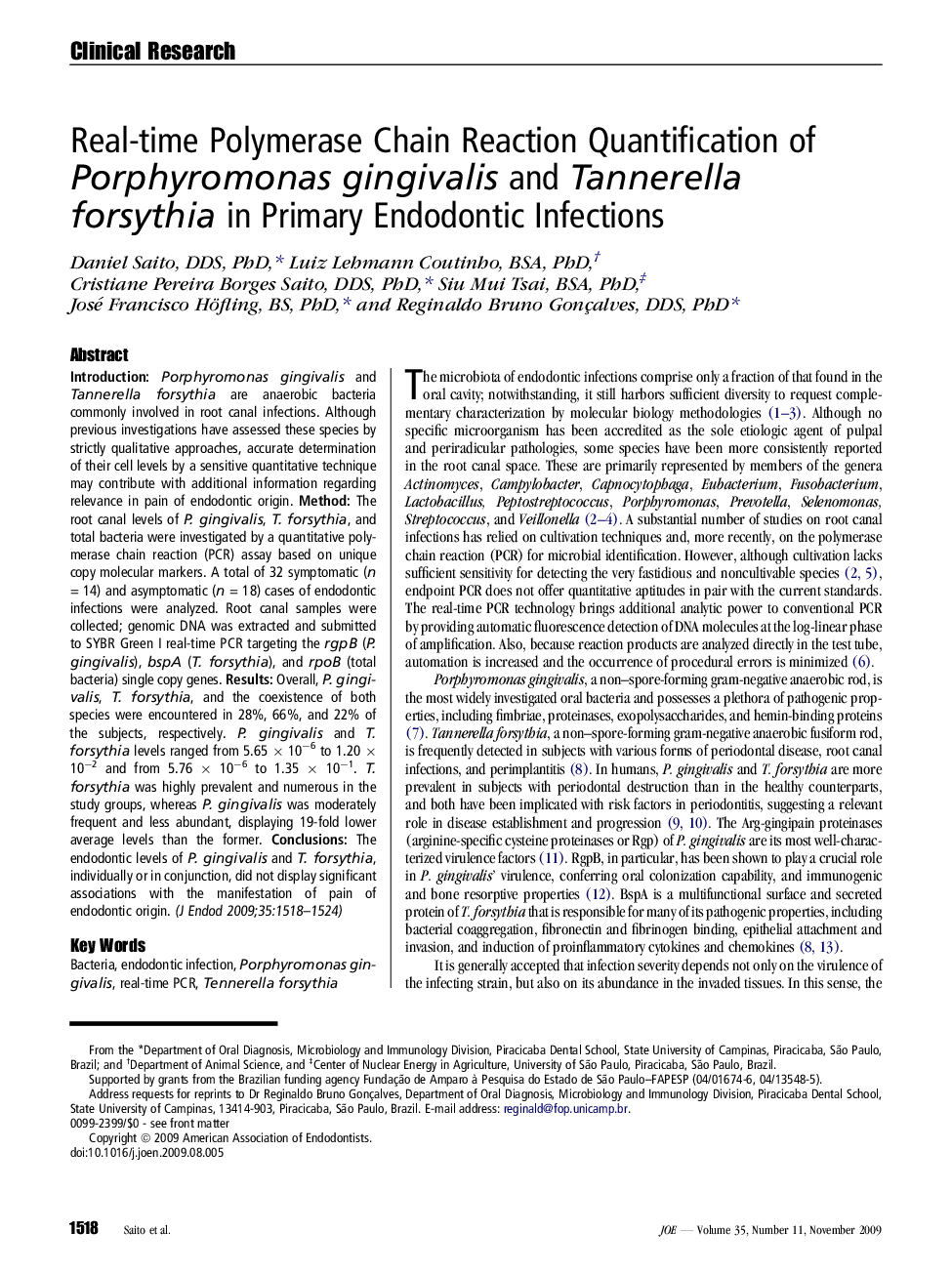| Article ID | Journal | Published Year | Pages | File Type |
|---|---|---|---|---|
| 3148269 | Journal of Endodontics | 2009 | 7 Pages |
IntroductionPorphyromonas gingivalis and Tannerella forsythia are anaerobic bacteria commonly involved in root canal infections. Although previous investigations have assessed these species by strictly qualitative approaches, accurate determination of their cell levels by a sensitive quantitative technique may contribute with additional information regarding relevance in pain of endodontic origin.MethodThe root canal levels of P. gingivalis, T. forsythia, and total bacteria were investigated by a quantitative polymerase chain reaction (PCR) assay based on unique copy molecular markers. A total of 32 symptomatic (n = 14) and asymptomatic (n = 18) cases of endodontic infections were analyzed. Root canal samples were collected; genomic DNA was extracted and submitted to SYBR Green I real-time PCR targeting the rgpB (P. gingivalis), bspA (T. forsythia), and rpoB (total bacteria) single copy genes.ResultsOverall, P. gingivalis, T. forsythia, and the coexistence of both species were encountered in 28%, 66%, and 22% of the subjects, respectively. P. gingivalis and T. forsythia levels ranged from 5.65 × 10−6 to 1.20 × 10−2 and from 5.76 × 10−6 to 1.35 × 10−1. T. forsythia was highly prevalent and numerous in the study groups, whereas P. gingivalis was moderately frequent and less abundant, displaying 19-fold lower average levels than the former.ConclusionsThe endodontic levels of P. gingivalis and T. forsythia, individually or in conjunction, did not display significant associations with the manifestation of pain of endodontic origin.
